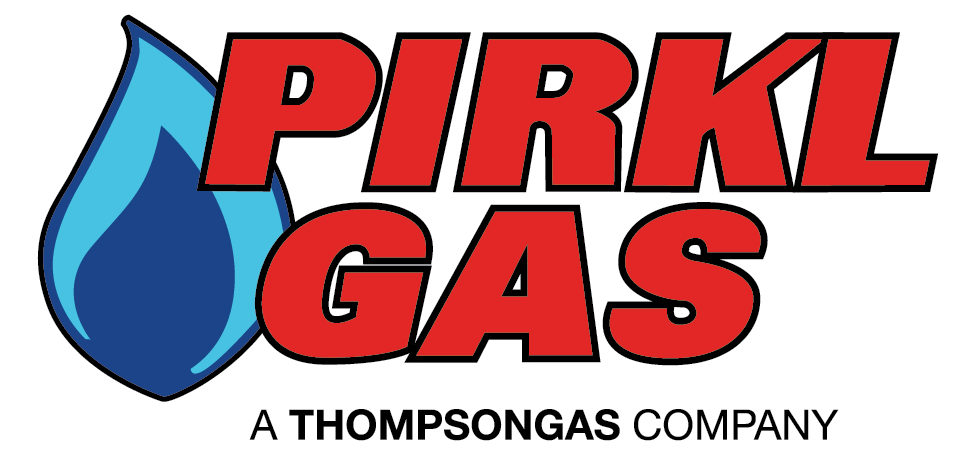Propane is a hydrocarbon (C3H8) and is sometimes referred to as liquefied petroleum gas, LP-gas or LPG. Propane is produced from both natural gas processing and crude oil refining. It is nontoxic, colorless and virtually odorless. As with natural gas, an identifying odor is added so the gas can be readily detected.
Propane Is a Safe Fuel
The propane industry has developed numerous methods to make the transport and use of propane safe:
Propane equipment and appliances are manufactured to rigorous safety standards.
Propane has a narrow range of flammability when compared with other petroleum products. In order to ignite, the propane/air mix must contain from 2.2 to 9.6 percent propane vapor. If the mixture contains less than 2.2 percent gas, it is too lean to burn. If it contains more than 9.6 percent, it is too rich to burn.
Propane won’t ignite when combined with air unless the source of ignition reaches at least 940 degrees Fahrenheit. In contrast, gasoline will ignite when the source of ignition reaches only 430 to 500 degrees Fahrenheit.
The odds of a person dying from a direct result of a propane transportation or storage accident involving loss of cargo are about the same as those of getting struck by an airplane falling from the sky.
If liquid propane leaks, it vaporizes and dissipates into the air.
Because it is released from a pressured container as a vapor, propane can’t be ingested like gasoline or alcohol fuels.
Because propane is virtually odorless and colorless in its natural state, a commercial odorant is added so propane can be detected if it leaks from its container.
Safety Starts with Education
The propane industry is also engaged in ongoing efforts to increase safety in the handling, use and maintenance of propane and propane equipment:
NPGA offers an award-winning preventive maintenance program called GAS Check® (Gas Appliance System Check). Trained technicians inspect entire propane systems and appliances to ensure they are running safely and efficiently, so consumers can save money and enjoy a healthy environment. The program also educates homeowners on the proper maintenance of propane appliances and how to safely handle propane.
The Certified Employee Training Program (CETP) is a nationally recognized training program for people involved in the handling of propane, equipment and appliances. The CETP is being used extensively throughout the country and is continually updated and expanded.
Each year, thousands of industry employees and firefighters attend service and safety schools sponsored by the industry. The sessions provide important training in how to quickly control and safely handle a propane emergency.
NPGA, with funding from the Propane Education & Research Council, has developed a new comprehensive training program for America’s public safety agencies and propane retailers. The educational package includes a 220-page textbook, Propane Emergencies, which has been sent free to every fire department in the country. The objectives of the emergency response program are to increase the level of responder safety, improve efficiency to mitigate emergencies and to encourage propane marketers and local emergency responders to develop working relations before an accident occurs. In addition to the textbook and training materials, there is a website (www.propanesafety.com) dedicated to the program that is continually updated, with interactive scenarios utilizing real world emergency situations. Firefighters can also get information by calling a toll free number (800/968-9484).
Propane Is a Good Value
According to the U.S. Department of Energy, it could cost consumers twice as much to operate their range, water heater, dryer or furnace with electricity than with propane gas.
Overall propane costs for fleet vehicles typically range from 5 percent to 30 percent less than conventional or reformulated gasoline. Many states offer fuel tax incentives to encourage the use of clean fuels, thus further reducing operating costs.
Propane Is a Versatile Fuel
Propane is used by millions of people in many different environments-homes, industry, farming and more.
More than 14 million families use propane to fuel their furnaces, water heaters, air conditioners, outdoor grills, fire places, dryers and range tops.
Because propane produces minimal emissions, it is safe to use indoors. As a result, nearly 500,000 forklift trucks are powered by propane. Millions more choose this clean-burning alternative for bus, taxi, delivery and other fleets to minimize air pollution in metropolitan areas.
Propane is used on 660,000 farms for irrigation pumps, grain dryers, standby generators and other farm equipment. It is an essential fuel for crop drying, flame cultivation, fruit ripening, space and water heating and food refrigeration.
Propane is easy to transport and can be used in areas beyond the natural gas mains. Because it is 270 times more compact as a liquid than as a gas, it is economical to store and transport as a liquid.
